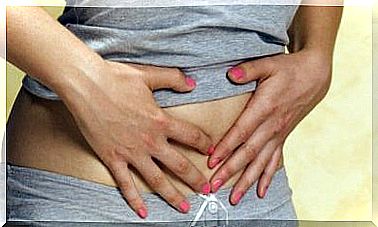What Are “dense Breasts ” And What Are The Risks?
Just like breast cancer, the development of dense breasts is genetic. If this is the case for you, remember to get regular checkups
We have already pointed out the importance of regular gynecological checkups several times. One of the goals of these examinations is the early diagnosis of “dense breasts”. But what are dense breasts ?
Dense breasts contain less fat and more glandular tissue and are characterized by a higher risk of cancer.
It must be made clear, however, that dense breasts do not automatically mean that a tumor will develop. But the risk is greater and therefore regular examinations are particularly important.
The Journal of the National Cancer also advises that all women should be checked for dense breasts.
In addition, it is important to know that this problem can often be avoided by following healthy lifestyle habits from a young age. Read on to learn more about it.
Risks from thick breasts
It is impossible to tell with the naked eye whether the breast tissue is denser than normal. From the age of 40, it is therefore advisable to have a check-up once a year.
Sometimes, due to the high density of tissue and glands in the breasts, a mammogram can not accurately determine whether a tumor is present. In this case, further investigations and measures must follow.
We don’t want to scare or alarm you, but we would like to point out that prevention and check-ups can be crucial for your health.
William Barlow from the Research Center for Cancer and Biostatistics in Seattle (USA) explains that breast density depends on the amount of fat and the glandular tissue.
In younger women, the breasts are made up of firm connective tissue, but as the body ages, the fibrous gland tissue is replaced by fatty tissue. More frequent check-ups are then necessary.
If the breast tissue is dense, however, diagnosing a breast tumor is far more complicated because it can hardly be seen on a mammogram. Therefore, an ultrasound examination is also necessary in order to be able to make a correct diagnosis.
Risk factors for dense breasts
1. Menopause : The density of the breasts increases more frequently in women after menopause, especially if they are overweight or have an increased body mass index.
2. Genetic predisposition: As with breast cancer, the risk increases with genetic predisposition. So if anyone in your family has it or has breast cancer, don’t wait and get regular checkups.
Education and prevention save lives every year.
Can you prevent dense breasts?
Doctors often prescribe hormone replacement therapy from menopause onwards as a preventative measure, especially if there is a genetic risk.
The National Cancer Institute in Bethesda, USA, carried out hormone therapy on 7,000 women after the discovery of dense breasts.
It is true that regular monthly examinations can prevent cancer, but it has been shown that hormone treatment can still be useful in many cases (not in all, but in a high percentage).
So in order to reduce the risk as much as possible and prevent thick breasts, you should pay attention to the following information:
- Don’t forget your family background: If your mother, grandmother, aunt, or sister has had breast cancer, it’s important to get regular checkups.
- Quit smoking.
- Make sure you have an adequate body weight for your height and age. Try to avoid being overweight, especially if you are going through menopause.
- Avoid fatty foods, white sugar, refined wheat flour, and salt as much as possible. They cause inflammation and are very harmful to our organism.
More tips
- Above all, consume fresh fruits and vegetables, preferably raw. Avoid juices from the supermarket and opt for an apple for breakfast and not the classic toast with jam. When making salads, eat some ingredients raw, such as spinach, small onion pieces, tomatoes … etc.
- Avoid ready meals and get used to eating fresh foods. Remember, eating 5 meals a day is recommended, and overeating lunch or dinner is not a good thing.
- Drink enough fluids.
- Daily exercise and exercise are important to lower the risk of developing thick breasts. Walk for half an hour every day and do aerobic exercise.
- From the age of 40 you should have a mammogram every year. Make an appointment with your gynecologist; if you have a genetic history, you should have yourself examined more often.
Remember that in addition to MRI (magnetic resonance therapy), ultrasound examinations should also be performed. If the breast density is increased, this examination is more reliable in detecting possible tumors.
Remember, prevention is the most important thing.









